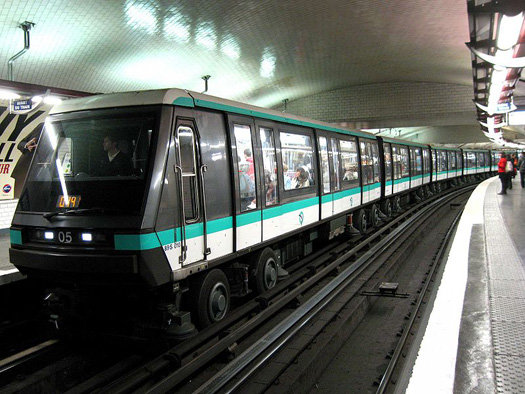 Trains are the world’s most popular mode of transport, even popular than cars due to their speed, accessibility and reasonable fare. Ever since the invention of the first railway engine, trains have served as the medium between far-off distances, inspired many artists, poets and writers and offered time-to-time luxury services for those who cannot spend a fraction of their time devoid of them.
Trains are the world’s most popular mode of transport, even popular than cars due to their speed, accessibility and reasonable fare. Ever since the invention of the first railway engine, trains have served as the medium between far-off distances, inspired many artists, poets and writers and offered time-to-time luxury services for those who cannot spend a fraction of their time devoid of them.
Trains have also been known to use maximum energy for operation, until the arrival of airplanes and ways have been explored to reduce the consumption. The humble transport has undergone several transformations in the field of energy, from coal to electricity, reducing its consumption while increasing its efficacy manifolds. But, due to the increasing energy crisis all over the world, solutions are now being searched for converting the transit energy wasted by the trains, as trains, like other machines, do not use energy to their fullest. Following countries have tried some solutions to save energy in trains and convert energy emitted by them – from mechanical to chemical – into other forms so as to be used for other applications:
1. Sweden
Trains are known to generate huge amounts of heat energy. When one walks by the engine, he/she can easily sense the high temperature emitting from it, enough to boil hundreds of cups of coffee. Moreover, the heat generated by man is not significant, if taken alone, but is massive if groups are brought in place.
Such was the situation faced by Sweden. So much was the heat generated that the stations had to install cooling machines to pull the heat out. One of the railway station-developers, Jernhusen-AB, proposed to use the heat from Stockholm’s station to warm an office building, Kungsbrohuset, in 2008. According to him, instead of dispensing heat out, heat-exchangers should be installed, which transfer heat from one medium to another. This device, if installed with the cooling system, can be able to store heat and transfer it through the pipes. The effect of this mechanism, after it was installed, was the heat from the Central Station accounted for 25% of the building’s heat.
2. Israel

Trains, while running on tracks, exert huge amount of mechanical force on them. There have been technologies – transducers – that can convert mechanical energy to electrical energy. One such technique based on piezoelectric effect (which states that a material, if under mechanical stress, can generate electrical energy), which was used by an Israeli-based developer, Innowattech, who is specialized in the development of patented IPEG Piezo Electric Generators. A series of all-weather piezoelectric pads was laid down between the railway-ties and -tracks. These sensors captured the energy generated by the trains when they ran on these tracks – which caused vibrations and pressure – and stored them in the batteries or fed back to the grid. This energy could be used for future purposes. Due to the nature of such execution, the records of health of the track, as well as the basic properties of the train – length, speed and weight – passing over them, are continuously sent back to the developer with the help of a data transmitter.
3. U.S.A

When any vehicle – from a simple bicycle to an airplane – applies brakes, it generates some amount of energy. This energy is dependent on the speed of the vehicle, as well as its mass. Trains are bulky vehicles running at very high speeds. In such a case, energy generated from the braking system is quite high. This was the logic behind the approach of The Southeastern Pennsylvania Transportation Authority (SEPTA), responsible for railways in Pennsylvania, to Viridity Energy, a small grid company. In this venture, SEPTA wanted to harness the energy generated from the braking by storing it in the batteries. This stored energy could be used to cut down SEPTA’s power bills, or increase their profits by selling it back to the grid. The project is expected to be launched in the Letterly station next year.
4. France

The heat-generating system in France, currently in the design phase, is almost similar to that of Stockholm station. At one of the French Metro stations, Rambuteau, it has been planned to funnel hot air generated by the commuters to be used in the nearby block of 17 apartments. The heat generated, unlike in Stockholm, will be used to warm water in the pipes, which can be used by the inhabitants of the apartments.
5. China

Chinese rail networks are the world’s largest high-speed networks, which say something, given the large size of the country. This offers many opportunities to convert energy generated from the trains for other purposes.
Designers, Jiang Qian and Alessandro Leonetti Luparini, are into the venture to make use of one such energy type i.e. wind. It is widely known that any moving object generate wind energy while moving from one place to another. Trains generate this energy in large amounts due to their masses and speeds. The designers want to harness this energy by capturing it with the help of T-boxes, which house wind-turbines. These T-boxes will be installed between rail-ties. When the trains will pass over them, the turbines will operate, converting wind-energy to electrical energy that will be stored in a storage device, and then sent on to the grid. This energy can be used to provide electricity to the remote areas along the railway route.
Korea is also trying to make use of wind energy, and instead of T-boxes, it is planning to install turbines on the walls of the tunnels in which the trains would be running.




